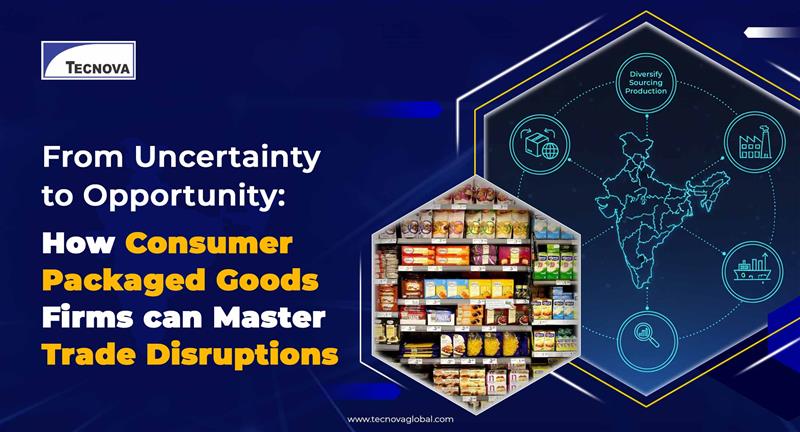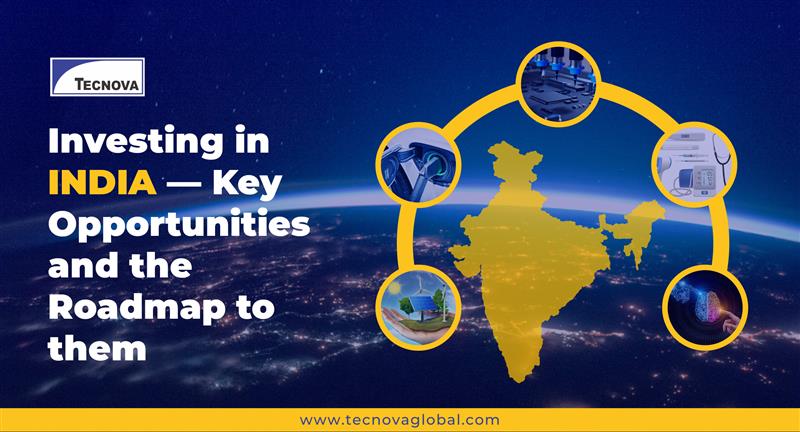Manufacturing in India: Unlocking Global Opportunities
- FDI in manufacturing surged 18%, reaching USD 19.04 billion in FY 2024–25.
- India is now positioned at the center of global supply chains, offering a scalable base for high-value manufacturing.
- Manufacturing GVA is expected to grow 9.5%, reaching USD 3,515.87 billion in FY25.
- Capacity utilisation in the sector climbed to 75.4%, reflecting strong production momentum.
- The manufacturing sector contributes 17% to India’s GDP, employing over 27 million workers.
- India ranks among the top three global manufacturing destinations, driving long-term investment potential.
Investment Momentum and Innovation Synergy
- Leather exports grew 25% year-on-year, projected to reach USD 6.5 billion by FY26.
- Defence exports surged 78% in Q1 FY25, touching USD 828 million.
- The SEMICON India Program promotes chip self-reliance with an investment of USD 8.79 billion.
- Three new semiconductor plants worth over USD 15 billion were approved in 2024.
- Startup ecosystem backed by DPIIT strengthens local sourcing and manufacturing innovation.
- Over USD 175 billion in startup funding and 76 IPOs have connected foreign investors with Indian innovators.
How Tecnova Helps Global Businesses Succeed in India
- End-to-End Market Entry Support: Helps international firms assess India’s manufacturing potential, regulatory framework, and operational feasibility.
- Location & Partner Identification: Identifies the right industrial clusters, suppliers, and local partners aligned with business objectives.
- Business Setup & Compliance: Manages incorporation, legal registrations, and compliance under Indian business and labour laws.
- Operational Support: Provides on-ground assistance in facility setup, vendor development, and supply chain management.
- Growth & Expansion Strategy: Designs scalable growth strategies tailored to India’s market dynamics and sectoral opportunities.
- Strategic Advisory: Offers continuous insights on policy changes, investment incentives, and risk mitigation to ensure long-term success.
Manufacturing in India: Opportunities and Considerations for Foreign Companies
Are you planning to expand your firm for manufacturing in India?
In 2025, India’s manufacturing sector is having its momentum. The industry witnessed an 18% surge of foreign direct investment (FDI), reaching USD 19.04 billion from USD 16.12 billion in FY 2023-24.
As India positions itself at the heart of the global supply chain, its manufacturing market is opening up to foreign firms with a world of scalable opportunities.
In this article, we will walk you through the reasons behind India’s manufacturing boom and how it helps foreign firms to enter this diverse market.
India at a Glance: A Manufacturing Powerhouse
India is the 3rd most sought-after international manufacturing destination. Let us take a closer look at the industry:
● The nation has the potential to export goods such as electronics, chemicals, pharmaceuticals, etc, worth USD 1 trillion by 2030.
● The nominal manufacturing gross value added (GVA) is estimated to be USD 3,515.87 billion in FY25 from USD 3,211.08 billion in FY24, reflecting a growth rate of 9.5%.
● The capacity utilisation in the manufacturing sector reached 75.4% in Q3 of FY25.
● Currently, the manufacturing industry contributes 17% of the national GDP with over 27.3 million workers. The number is anticipated to touch 25% by the end of 2025.
Investments and Growth of the Manufacturing Sector in India
India is experiencing steady growth in exports across key sectors. It strongly affirms India’s reliability as a strong manufacturing hub for foreign companies. For example, the Leather exports grew 25% YoY, expected to reach USD 6.5 billion in FY26. The defence exports reached USD 828 million in FY25, growing 78% in Q1 FY25 alone.
Additionally, India is changing its semiconductor and high-tech manufacturing. In 2024, 3 new chip plants worth more than USD 15 billion received approval. The Central Government of India launched the SEMICON India Program to promote chip self-reliance in India, with an investment of USD 8.79 billion.
To accelerate innovation, the Government of India is also building a startup ecosystem with the support of the Department for Promotion of Industry and Internal Trade (DPIIT) for different types of manufacturing in India. The system primarily focuses on the promotion of local sourcing and infrastructural development for manufacturing startups. With USD 175 billion in startup funding and 76 IPOs, India has bridged the gap between foreign firms and local partners.
.jpg)
Why are Foreign companies betting on India?
International manufacturing giants are choosing India as their next destination and for good reasons. Take a look:
1. Rich talent pool
India is home to a large and tech-savvy talent pool. With millions of skilled students graduating every year in technology, business, and engineering, India maintains a steady supply of technical talent for foreign firms that are interested in manufacturing in India.
In addition to this, India is also projected to be the second-largest consumer market across the globe by 2030. This gives foreign manufacturers in India dual advantages. They can not only manufacture the product at competitive rates but also tap into the domestic market to earn profits.
2. Improving infrastructure
Various infrastructural projects, like industrial corridors and smart townships, are currently in process. The Government is resolving infrastructural bottlenecks by introducing industrial parks, logistics centres, ports, etc.
For instance, in 2025, India inaugurated its first deep-water trans-shipment port in Kerala, the Vizhinjam International Seaport, for seamless sea trade across Asia.
3. Strategic location
The geographical location of India acts as its competitive advantage. The nation conducts hassle-free exports to Asia, the Middle East, Africa, Europe, and America. The easy access to raw materials and the development of interstate trade make India even more attractive to foreign companies.
4. Export growth potential
Under the PLI scheme, the export potential of India has grown rapidly. Its stronghold in global supply chains as an assembly base, as well as the hub of R&D, triggers global firms to make India a cost-effective manufacturing destination.
.jpg)
8 Government of India Initiatives to Drive growth in India’s Manufacturing Sector
1. Product-Linked Incentive Scheme (PLI)
The PLI scheme offers financial incentives to manufacturers of various sectors, like pharmaceuticals, automotive, etc. The scheme increases domestic production, enhancing the export capacity of the manufacturing industry.
Moreover, as per the recent report of the Ministry of Commerce & Industry, the introduction of Production Linked Incentive (PLI) schemes facilitated a manufacturing growth, securing more than 1 million jobs in India across 14 sectors.
2. Make in India
Launched to promote India as a global manufacturing centre, this initiative encourages both domestic and foreign companies to establish a manufacturing plant in India. It simplifies the regulation, helping foreign companies to hire local partners and set up R&D units.
3. Digital India
Digital India primarily focuses on tech adoption. It supports foreign manufacturers to be a part of the Industry 4.0 ecosystem by digitising the infrastructure and services.
According to the Ministry of Electronics and Information Technology (MeitY), the digital economy of India will contribute 20% of the national income by 2029-30.
4. National Manufacturing Mission (NMM)
The NMM, another GOI initiative, aims to increase the GDP share of the manufacturing sector. It focuses on building connected industrial corridors and promoting innovation to maintain sustainable growth and create various employment opportunities.
Introduced for MSMEs, this policy continues with the goals of ‘Make in India’. The Ministry of Corporate Affairs anticipates generating a turnover of more than USD 4 billion through this scheme.
5. National Industrial Corridor Development Programme (NICDP)
The Government of India introduced NICDP to develop futuristic industrial cities and economic hubs across the nation. Featuring Smart Industrial Townships, plug-and-play infrastructure, walk-to-work model, etc, these cities will reduce the logistics and production cost of foreign and domestic manufacturers, including MSMEs.
The program has set an export target of USD 2 trillion by 2030. It also focuses on multi-modal connectivity, aligning with the goals of the PM GatiShakti National Master Plan.
6. Mega Integrated Textile Region & Apparel (PM MITRA)
The Indian textile industry is a key part of the manufacturing sector. To improve its production capacities, the Government plans to develop tech-led industrial parks at 7 sites across India, including Virudhnagar (Tamil Nadu), Lucknow (Uttar Pradesh) and Amravati (Maharashtra).
The scheme is expected to attract more than USD 7 million in investment and will provide around 2 million employment opportunities by 2028.
7. Export-Linked Incentives
Schemes like the Merchandise Exports from India Scheme (MEIS) or the Service Exports from India Scheme (SEIS) are also key drivers to offer cost advantages to exporters. While MEIS offers 2% - 5% of the Free on Board (FOB) value to all exporters, the SEIS offers up to 7% of the net foreign exchange earnings to all service exporters.
8. MSME Champions Scheme
The MSME Champions Scheme is an initiative by the Indian Ministry of MSME to empower micro, small, and medium enterprises. Featuring innovative ideas like Zero Defect Zero Effect, this scheme allows MSMEs to manufacture quality products with a minimal environmental impact.
.jpg)
8 Challenges Foreign Manufacturers Face in India
Challenge 1: The industrial infrastructure in India is still in the developing stage. Gaps in transportation and utility services can slow down the operations of manufacturing in India.
How Tecnova Helps:
● Tecnova takes reasonable steps to ensure transport and utility services are reliable in proposed locations.
● It connects foreign companies in India to government‑led infrastructure corridors and smart industrial townships for better access.
Challenge 2: Multiple state and central regulations and licensing processes can lead to compliance confusion.
How Tecnova Helps:
● Being 40 years and more in the industry, Tecnova helps you navigate through the regulatory landscape of India.
● It also provides end-to-end compliance support, be it regarding local legislation or export rules.
Challenge 3: Shifting political parties may cause policy alterations.
How Tecnova Helps:
● Being a Leading management consulting firm of India, we closely monitor policy trends and update foreign manufacturers, if needed.
● The firm helps to connect with government officials to get incentives and sign Memoranda of Understanding (MoUs) or other official agreements.
Challenge 4: High domestic competition and rising costs make it hard to stand out.
How Tecnova Helps:
● Tecnova facilitates a comparative study between your manufacturing firm and other leading companies to find areas of improvement.
Challenge 5: The market in India is too diverse to capture. Each state is different in language, demand, and local regulations.
How Tecnova Helps:
● For the last 40 years and more, Tecnova has been studying the regional markets to help you pick the right location for manufacturing in India.
● Being a leading consulting firm, Tecnova understands local consumers as well as B2B buyers. Thus, it tailors your marketing approach according to their needs.
Challenge 6: Dependency on local imports can cause customs delays and tariffs.
How Tecnova Helps:
● The firm maps your supply chain effectively to find local alternatives.
● Tecnova manages export paperwork, trade rules, and customs to help foreign firms in India stay on the right side of the law.
Challenge 7: Foreign firms may find it hard to match international standards (ISO, CE, UL, etc.) with local suppliers.
How Tecnova Helps:
● Tecnova consistently audits and selects suppliers to help foreign companies maintain their product quality.
● It also provides necessary training and quality assurance consulting to the hired workforce.
Challenge 8: Foreign manufacturers face difficulties in managing currency risks. This can result in delayed payments and high capital costs in India.
How Tecnova Helps:
● Tecnova offers financial risk assessment to help foreign companies conduct business in India and earn profits.
From Global Vision to Indian Reality: Tecnova's Solution for Manufacturing in India
In simple words, Tecnova bridges the gap between global ambitions and Indian realities. With years of expertise in site selection and policy frameworks, Tecnova enables foreign companies to set up cost-efficient and scalable manufacturing operations in India.
References:
https://shorturl.at/MuyTo
https://shorturl.at/MsXM4
https://shorturl.at/eQPF8
Optimizing Manufacturing in the Indian Market: Key Factors
Top 5 Tips for Exploring Business Opportunities in the Indian Market





.png)




.jpg)
.jpg)
.jpg)


.png)





.jpeg)

















.png)

.png)









.jpg)




.jpg)























































